With winter approaching it’s time to take another look at your garden and greenhouse to see what edibles you can grow and harvest in winter
Gardening as a beginner can be very daunting without some expert guidance. Spring and summer are the natural time to sow, grow and harvest fruit and vegetables.
But, with winter approaching, what can you grow in colder weather to provide some fresh produce for your family?
You need to plan and plant
If you haven’t already got a few things growing in your garden and greenhouse now, that will limit what you can do this season. But all is not lost; there are still some vegetables, salads and even herbs that will crop over the winter if you start now. And there are a few ways to cheat too, if you know how!
Basically, it’s all about planning and planting and understanding about how the cold affects plants and how plants grow.
The first thing that’s really important to understand is that when it is very cold most plants slow or stop growing.
It doesn’t mean that they necessarily die, though some might die back, but the cold will slow growth right down and reduce the chance of harvest.
That’s why getting winter crops into the ground or greenhouse in mid to late summer is important. Most plants need to establish and start into growth so that you can harvest little and often over winter. Think flavour bites rather than buckets of produce; but not for everything.
What does hardy, half-hardy or tender mean?
Possibly one of the most confusing things for beginners is understanding about hardy plants. When it comes to winter in the UK, anything you want to keep growing really needs to be fully hardy. And that means it can withstand temperatures down to about -15C, i.e. very cold.
If you are sowing any seed of anything from late autumn to late winter it must be hardy to grow on. And even if you germinate seeds in a heated propagator or indoors, if it’s not fully hardy, then it just won’t survive the cold.
So that does reduce what you can grow, even in a greenhouse. If you can keep the greenhouse frost free, then you can nurture a range of produce from potatoes and onions to salads and herbs.
The protection of the glasshouse will create a protected climate and enhance the growing conditions so that plants can keep growing slowly through the winter. Put simply; the greenhouse will extend the growing season at both ends and let you grow a bit more for a bit longer in between.
How should I start?
When growing winter veg, it’s important to understand that the range of things you can successfully grow is much smaller than what grows well in spring and summer. But you can still supplement your diet with freshly grown garden edibles.
Look at the size of your growing space; your garden and greenhouse. This will dictate what you can grow and how much you can grow.
First, make a wish list of edible plants that you like to eat. Don’t bother growing anything else. Look at what you can start now and plan ahead for the things that you can’t.
If you are starting out in gardening, don’t be too adventurous. Start small and build your confidence with easy to grow ingredients.
You can cheat by growing potted plants, plug plants and established plants at certain times of the year.
What vegetables can I grow in winter?
The vegetables that you can grow in winter are controlled by the lower light levels, shorter daylight hours and colder temperatures, but there are some easy things to start now and ways to get ahead and cheat a bit.
Look out for winter cropping veg plants from mail order companies. They have done the hard work for you in a timely manner.
In other words, they have sown and grown the seeds and plants and can supply cold hardy veg plants to your door ready to plant.
It’s a good way to get started and ensure you have a few plants growing in your greenhouse. You can also grow them under cloches in the winter veg patch. Choose hardy vegetables and salads and if in doubt, ask for advice.
What are the easiest winter vegetables to grow for beginners?
For the best results build your confidence by experimenting with a few easy to grow vegetables first. Here are a few ideas to give you some inspiration.
Peas
Don’t expect to be cropping pods of peas over winter, that’s not going to happen. But you can sow and grow peas right now and pick pea shoots, pea tendrils and pea leaves.
They taste like peas! And make a tasty addition to sandwiches, salads and menus. Every high-end restaurant uses these morsels for garnishing their dishes.
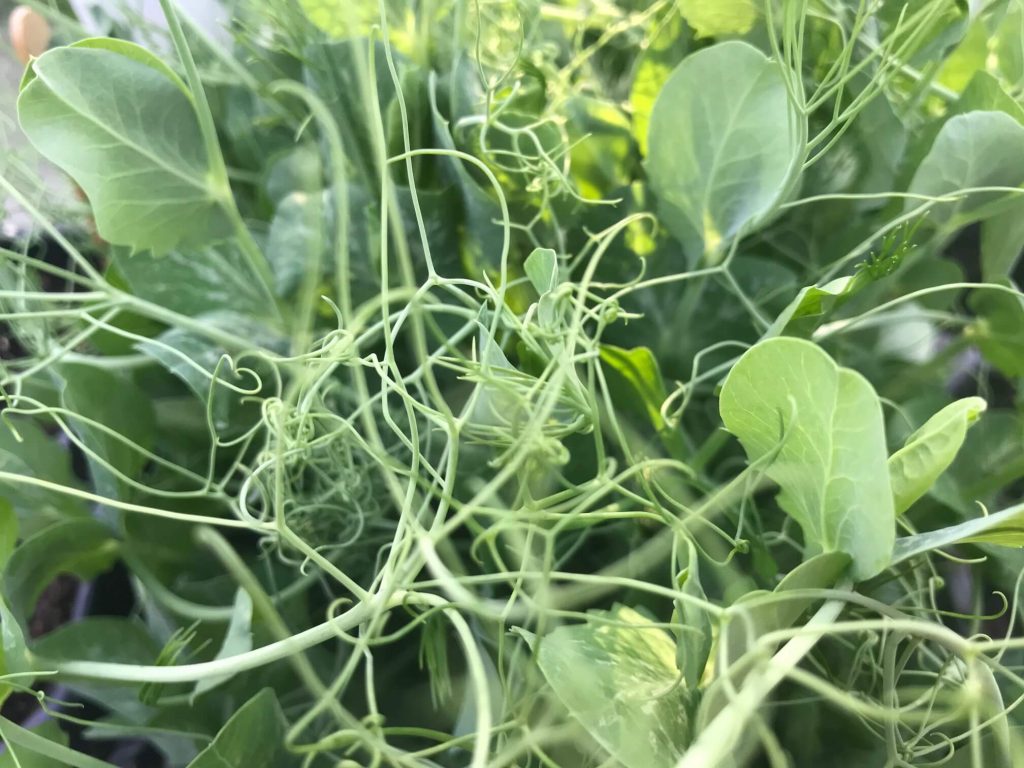
You can crop the pea shoots three or four times. You can plant out strong pea seedlings in spring for an earlier crop of pea pods. Sow them in short lengths of gutter or shallow seed trays.
Broadbeans
Many gardeners sow broad beans in autumn for an earlier crop of beans next season, but others grow them for their edible shoots and leaves.
A seed tray of broadbeans can generate a reasonable amount of leaves and shoots for stir-fries, salads and more.
Mustard and mizuna
Both can be sown and grown over winter. Seeds do need a little warmth to germinate, but a few sunny days or a heated propagator can get them started.
Be watchful for grey mould, which can flatten and kill young seedlings quickly and spreads fast. Mustards can be particularly useful for adding punchy flavour with just a few torn leaves.
They can also be successfully grown as micro leaves too (see below). Next season, sow them in late summer to extend the season.
Spinach
Another incredibly valuable winter vegetable, but choose the perpetual spinach or Swiss chard varieties, which are cold hardy and will provide a crop of tasty fresh leaves for your winter menus.
You can get them started in the greenhouse, but always better to sow late summer and then harvest the leaves as they grow over the winter.
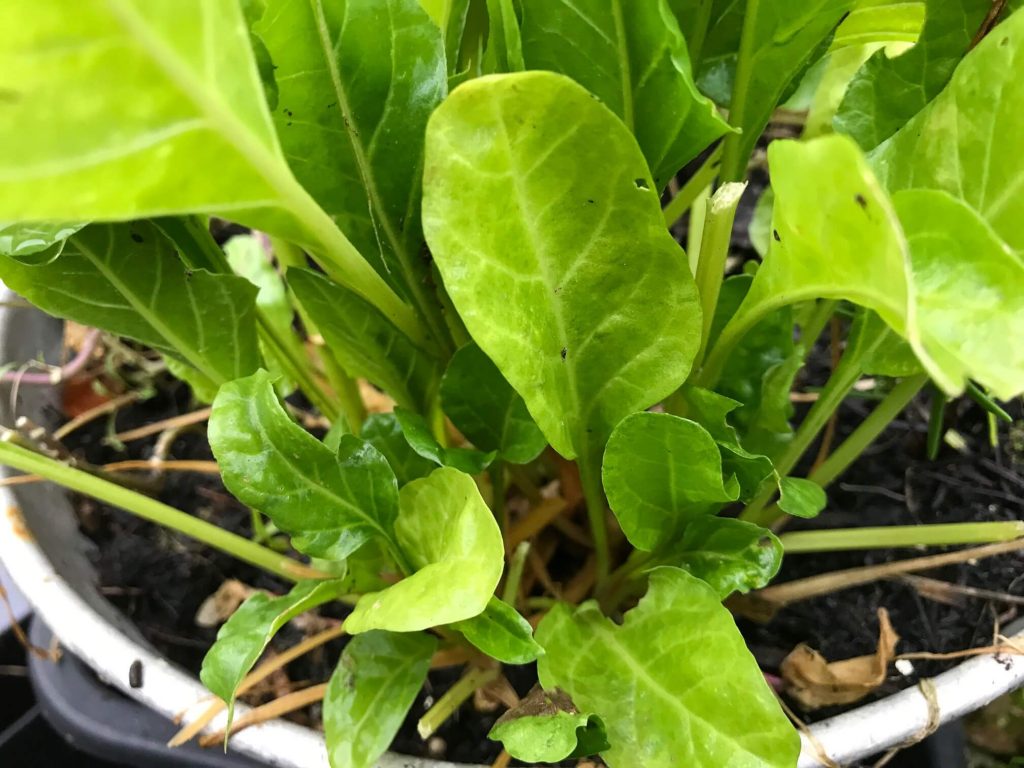
Remember, when it’s very cold, the plants will sit and sulk but as soon as the warmth returns they will spurt into growth. Keep them in pots in the greenhouse or under fleece or cloches outside to keep them cropping.
Onions
You can start onion sets (and shallot sets) off in pots or troughs under glass in the winter to give them a head start for next season.
If they fatten up, you can crop some of the leaves and even the bulbs for the occasional burst of flavour. Or, you can grow them on and plant them out in spring for a slightly earlier crop.
They can also be planted out into the veg garden in late autumn and early winter if the soil is not waterlogged or frozen.
Sow some spring onions from seed. They are fully hardy and will start into growth. Sow some extra for ‘micro-greens’ (see below), which are the first sprouts of seeds packed full of vitamins and flavour.
Garlic
Like onion sets, garlic cloves can be planted out in the winter veg garden or in the greenhouse in pots.
It’s fully hardy and in milder spells will root and put on some growth. Look out for winter planting varieties available to plant in November and December.
Don’t expect to be able to eat the actual planting cloves or to be able to harvest any crop apart from occasional leaves and shoots for flavouring.
But if you can get your hands on some bulbils of Babington Leeks (see perennial veg below) and plant them into pots of compost in late autumn, you can harvest the resulting mild garlicky shoots as soon as they form.
Corn salad
There’s a very underrated leafy salad crop that is winter hardy and grows well in the UK climate.
Corn salad or it’s sometimes called “Lambs Lettuce”, is very easy to grow from seed and makes a rich green rosette of leaves that can be picked for winter salads.
Sow it in trays, troughs or as a ‘ground cover’ around overwintering kales. It’s fast to germinate and will quickly provide a steady supply of winter salad leaves.
It’s a mild flavour and great for garnishes. If you let it flower and set seed, you’ll have plants forever more.
Winter lettuce
There are winter hardy forms of salad lettuce that you can sow and grow in a glasshouse over winter. But don’t forget the cut and come again leaf harvests from the other edibles in the greenhouse.
Shoots and leaves of herbs, spinach, onions, peas, broadbeans and corn salad can create an interesting salad.
For winter lettuce varieties consider things like ‘Winter Gem’ or look out for special winter mixes. Sow again under glass in Feb to get an early crop started for spring and summer.
What vegetables are harvested in winter?
As long as you’ve done the legwork before winter sets in, there are some winter hardy vegetables that you can harvest during the cold months, especially from the garden veg patch.
Leeks
Leeks are a great winter veg. They are cold hardy and will stand through winter in the veg patch until you dig them for supper.
A perfect winter crop, but unless you’ve started them off in summer, the only way to get them growing for this winter is to buy plug plants and get them planted fast.
It’s not a greenhouse crop, but you could grow a clump in a raised bed or large planter. They probably won’t bulk up as much as they would in the garden, but you’ll still get that sought after leek taste.
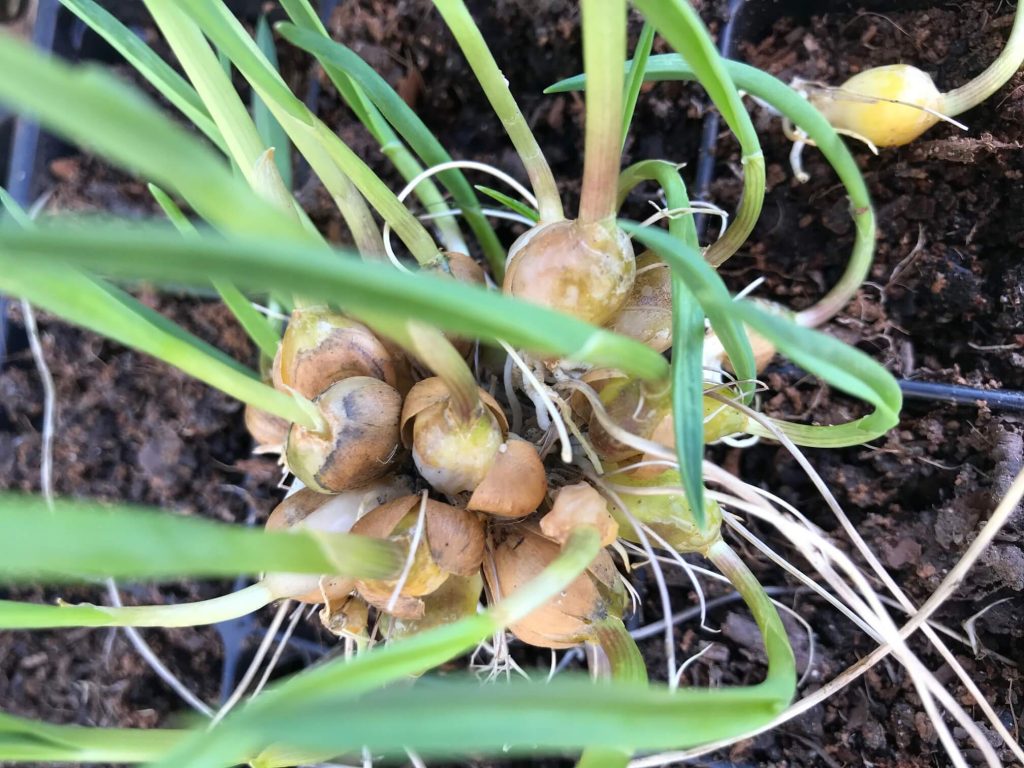
You can harvest the tops of the leaves for soups and stir-fries. But you can sow them over winter for next year’s crop, so it’s something to get ahead with now for a winter harvest next year. Or, consider grown Babington Leeks (see perennial veg below).
Carrots
If you want to be harvesting juicy carrots over the winter, you need to have sown them by mid-summer. The plants are winter hardy so you can leave them in situ and pull them when you want to harvest.
Cover the carrot bed with leaf mould in November to protect the plants over winter and harvest after a frost when the storage sugars in the roots are richer.
You can grow carrots in containers but choose shorter, dumpy carrot varieties that don’t need the soil depth to mature. Start them off in summer outdoors and then bring the pots into the winter greenhouse for protection and easier picking.
For an earlier crop in spring, sow and grow a quick maturing variety in November and take thinnings over winter if they start to swell. Leave the rest to harvest a decent crop when the weather warms in spring.
Parsnips
The traditional British Christmas lunch would be a poor show without honey-roasted parsnips. These are a tough, winter hardy root crop that can be left in the ground through winter, and dug when fresh roots are needed (as long as the ground isn’t frozen).
Similar to carrots, they need to be sown in plenty of time for the roots to fatten up and harvested after a frost to concentrate the sugars.
Potatoes
You can harvest homegrown potatoes for Christmas, but you really need to plant them in July/August, and you won’t get bucket loads even so. But it is fun and a realistic way to get enough fresh and tasty new potatoes for your festive lunch.
To do it you need to choose blight-resistant varieties and absolutely and completely keep them frost-free. Potatoes do not like the cold. Plant them in pots and bring them into the greenhouse in autumn.
Let them dry out between watering and water gently. Any sign of blight and harvest the spuds fast, remove the affected material from the greenhouse and keep your fingers crossed for the rest of the crop.
If you grow a good main crop variety (plant Easter Sunday) and harvest after flowering, you can lift and store the spuds into winter for winter use.
Pak Choi
This is another hardy oriental crop that when sown in late summer can provide a successional crop of leaves over the winter from plants growing in a cold greenhouse.
Cabbage and kale
Winter greens can be the mainstay of a winter veg patch. Winter cabbages can be cropped over winter, but you need to have sown and grown them in spring and planted them out in the summer. Same with kale (though you can cheat with perennial kale).
Kale is especially useful as you can pick the leaves as needed and eat them raw in salads too. Older leaves can have a stronger flavour, so keep picking to encourage more young leaves. You might need to protect plants from pigeons over winter.
Young leaves are a great source of greens through the colder months. Plants will sit and sulk in ice and snow and then start to grow again when the weather warms.
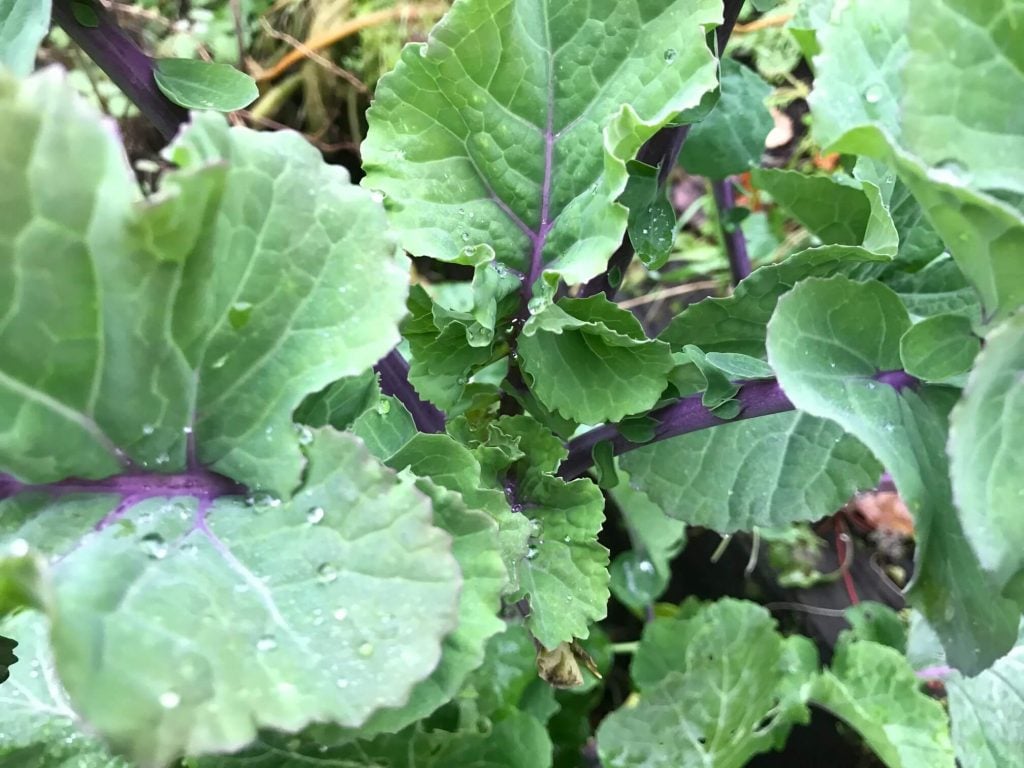
If you like kale, then grow a perennial variety such as Taunton Deane Cottager’s Kale. Take cuttings regularly, and you’ll have kale cropping all year round without the hassle of growing from seed.
Perennial veg you can keep cropping
There are lots of short cuts in gardening that you can utilise to make life easier and gardening more productive, and that applies to vegetables too.
Perennial vegetables need space but will reward you by providing a crop year after year. Some perennial veg, like asparagus, can be dug up and brought into a greenhouse for an earlier harvest, or covered with cloches and forced into shoot earlier. Still, they don’t really crop over winter.
Others such as perennial kale can be cropped all year round. Growth will slow, especially outdoors in cold weather, but you can take cuttings and keep them in a cold greenhouse where they will keep making new leaves through the winter.
Wild rocket
Don’t confuse this with salad rocket (Eruca sativa), which is an annual, but still a very tasty salad crop and well worth growing, but wait until spring and sow then.
Instead, sow some wild rocket (Diplotaxis tenuifolia) in autumn, it is actually a type of mustard, or if you’ve plants already, cut them back, pot them up and feed them. You can harvest leaves as they form for a punchy flavour burst.
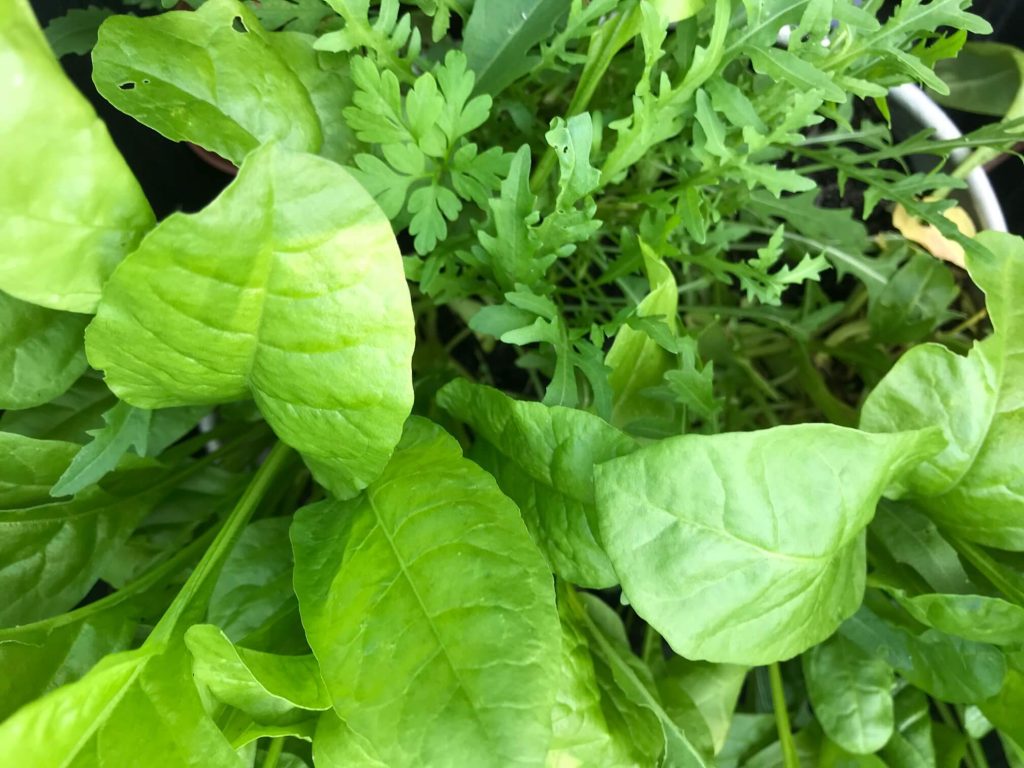
Great for sandwiches, garnishes and adding to salad and they will keep making new leaves and will live for a few years too. Sow more in spring to keep your crop going and have some outside.
Leeks
There’s a plant called Babington Leek that is really half leek half garlic. It grows from little bulbils that form after the flower, it doesn’t set seed, but it forms fat bulbs underground for using instead of garlic and once established it forms clumps of mini leeks in late winter/early spring.
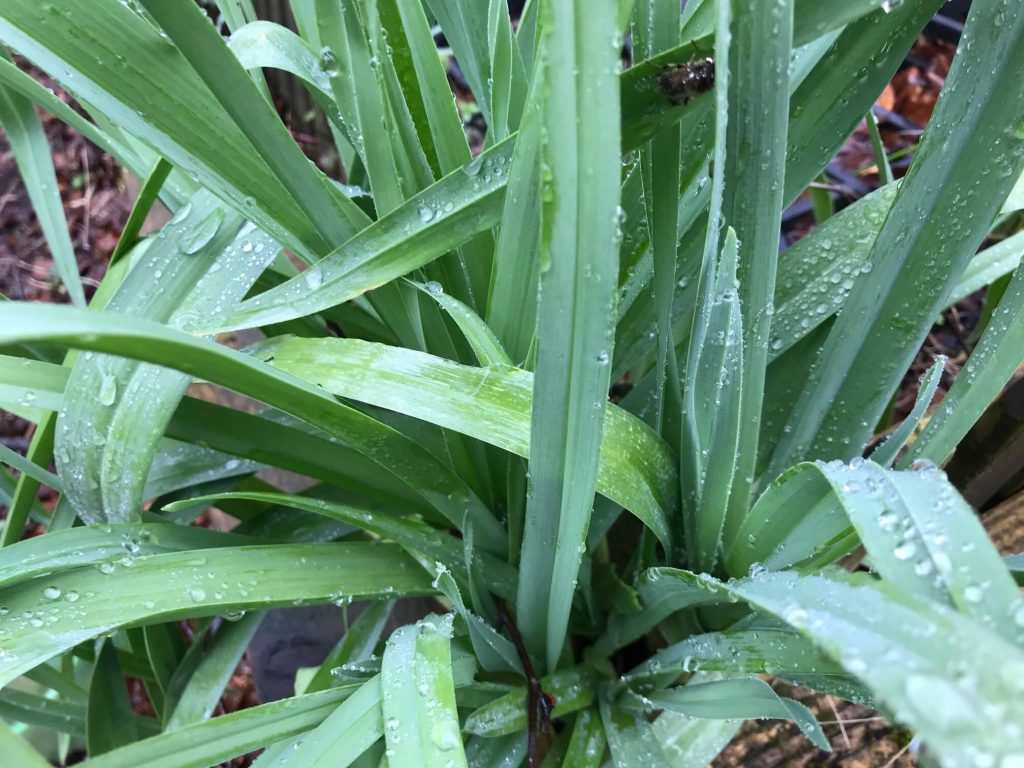
Each of these leeks matures into a fairly substantial leek like plant and can be cut and cooked in a similar way. But, if you don’t like garlic don’t bother as it a close relative and has a mild to moderate garlic taste.
Asparagus
It needs a bit of space and can be tricky to get going, but once you’ve got, it established you’ve got a source of the most divine and delicious short seasoned crop.
You can force it under cloches or grow in greenhouse pots, but it’s better grown outside where the soil can drain freely, and it gets some sunshine. That being said, it’s a four-week wonder that is worth every inch of the space it takes up, but only if you love to eat it.
With a bit of care and attention, you could try forcing some spears for winter harvest in a cold greenhouse if you have the space.
Jerusalem artichokes
Some would say these are an acquired taste, but that’s more likely due to the windy effect they can have on digestion.
That aside, these plants are a world apart from the thistle-like globe artichokes that burst into flower in summer and in fact aren’t even closely related.
The Jerusalem artichokes are a root crop, that’s hardy, prolific and perennial. Not one for the greenhouse unless you have large polytunnels.
They can become a thug, but the knobbly roots add a nutty flavour to winter bakes and root mash and can be roasted alone as a chef special.
Easy to grow, they are best planted at the edge of the veg patch in manure rich soil so they can be lifted easily. Or in very large tubs to prevent them running next door and beyond.
Once you’ve got them, they are here to stay, but nevertheless, they are a valuable winter crop. Buy some at the supermarket to taste and try before you plant. If you don’t like them, don’t grow them or they will take over the plot.
Winter herbs
When it comes to winter crops, the herbs should have a starring role. That’s because they are packed with flavour that can be used to spark up any meal or menu, sweet, savoury or both.
Add some rosemary leaves to the bread mix, some sage into the stuffing, some thyme to the pizza dough and whizz up some parsley or mint in the processor for a tangy sauce for something.
Winter herbs are in a class of their own and can be grown and harvested all through the winter, though like many plants in the coldest weeks they will sit and sulk until spring breaks. It’s the perennials and shrubby herbs that will shine in the winter.
Rosemary, sage, thyme maybe some marjoram are good plants to start with, but you can add salad burnet and winter savoury to the collection too. Herbaceous herbs that die back for winter can be cajoled into growth by potting them up in a quality compost and bringing them into a greenhouse.
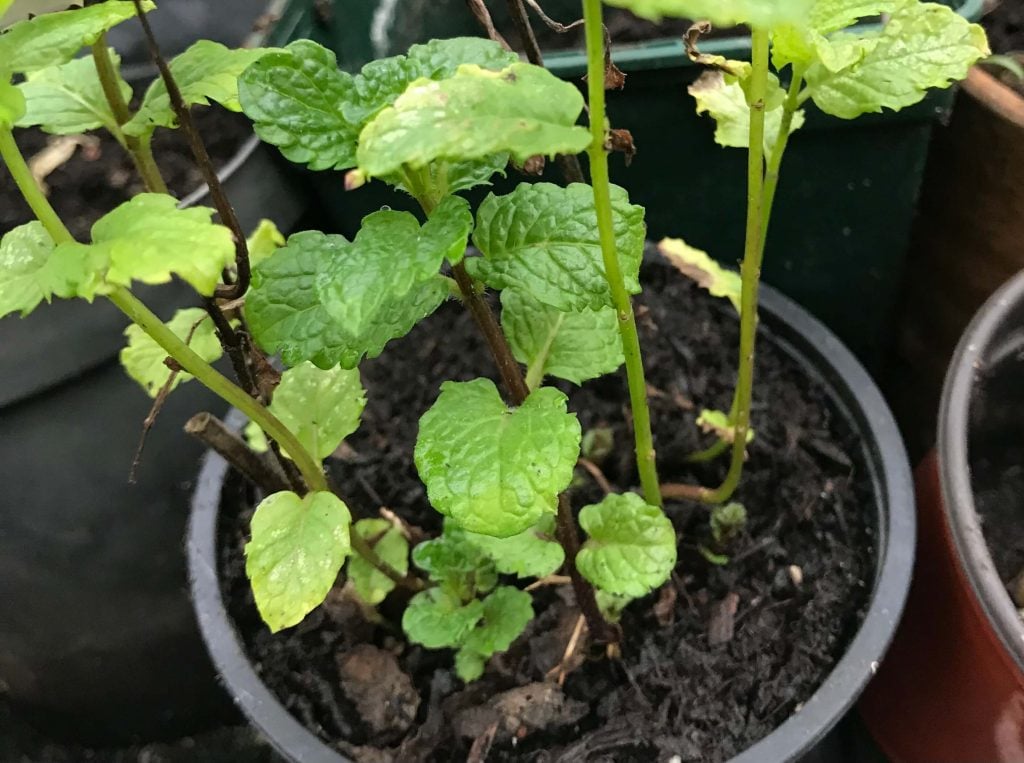
Things like mint, lovage, chives and fennel can be persuaded to produce a few tasty leaves and stems to transform your winter menus.
Grow micro-greens
If you’ve dined at a high-end restaurant or gastro pub, you must have munched on dolls house veg more commonly known as micro-greens.
These are the latest must-have, on-trend ‘vegetables’ sought after by top chefs. The funny thing is they are really just germinated seedlings, grown on agar or in hydroponics to produce flavour rich leaves for garnishes.
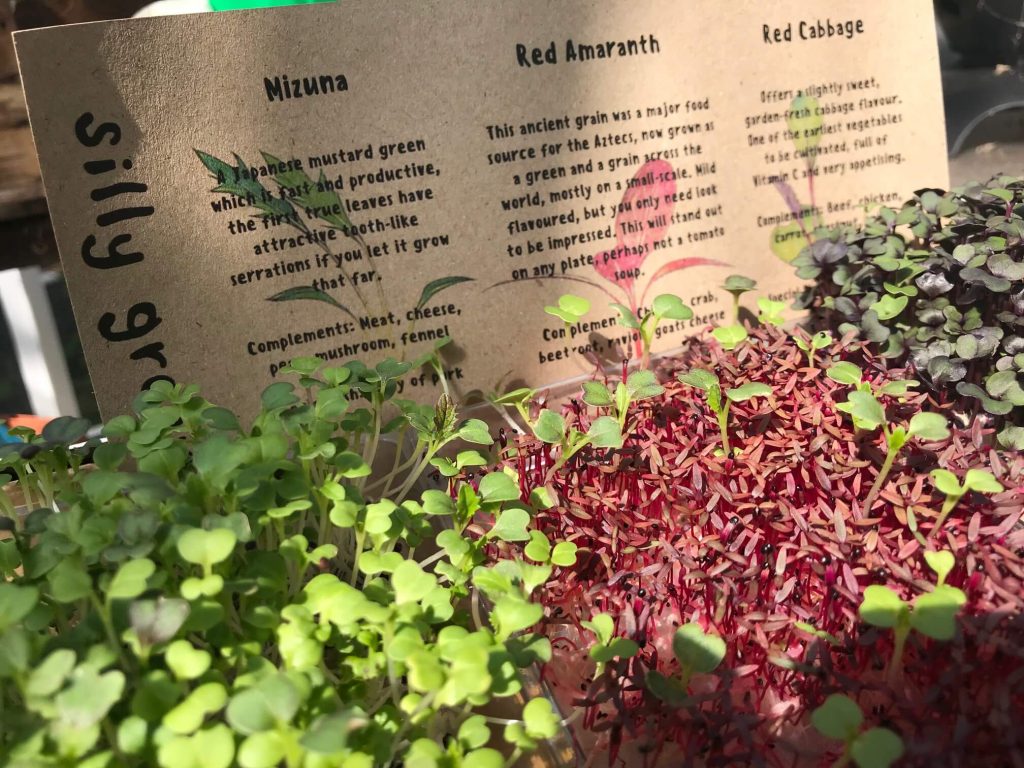
The good news is you can grow these in the kitchen or a greenhouse over winter as long as you choose winter-hardy plants. It’s a posher version of the hippyesque sprouted seeds we used to grow in glass jars, but both are a great way to add vitamin-rich ingredients to your winter fare.
Twice the value – make your homegrown veg worth more
If you want to up the ante and ensure that every morsel you grow to eat is worth the time and effort, then grow organic.
You only need to look at the price of organic food compared to non-organic to appreciate the increase in value, but actually, it’s the health aspects that are more important.
You don’t need and should not want to dress your salads and food crops in toxic chemicals. You can control greenhouse issues easily without resorting to pesticides making your greenhouse growing space a nicer place to be.
Choose peat-free compost such as Dalefoot Compost and give your plants a clean bill of health and a low carbon footprint so that you can sleep easy, eat well and grow healthy sustainable food for your family all year round.
How to prepare your greenhouse for winter
The winter greenhouse is a different place to the summer hothouse. Depending on its structure, it will provide varying protection for the plants inside.
Heating a winter greenhouse can be costly and wasteful. Instead, most gardeners rely on the magnifying effect of the glass, enhancing the warmth of the winter sun.
A low brick wall, a timber frame and a tiled, paved floor or even a can of water will all hold a modicum of heat, releasing it with a radiator effect to the surrounding area.
Before you stack it out with pots and planters of overwintering plants, have a clear out. Remove any fallen leaves and dead material as this can and will harbour fungal diseases.
Check around for overwintering bugs and mini beasts, especially slugs and snails and look out for any telltale signs of mice.
Think about sectioning part of the greenhouse off with bubble wrap to give extra protection to more tender plants; you can create a bubble-wrap tent. Or if you have a large glasshouse, you can actually install a partition to create different climate zones.
If you are going to use a greenhouse heater, you can heat a smaller area that is better insulated to keep the heat in. If you are using a heated propagator or soil cable, then use this insulated space to house them and to make the most of the warmth.
But remember that the bubble wrap will reduce the light that reaches your plants and you will still need to ventilate.
Sometimes it’s better to have a few cloaks of bubble-wrap or fleece ready to throw over susceptible plants when the coldest weather threatens, but that does depend on how cold and how long the cold snap is.
If you use one, remember to check your heater is working before the cold sets in.
If you are overwintering plants, use terracotta pots that will hold on to some of the warmth of a sunny day, or insulate beneath the planters with recycled polystyrene.
Make the most of all of your greenhouse by using shelving and staging to enable more pots and planters to be housed in the space you have.
Fill the staging with gravel and plunge pots to overwinter in the gravel. Be sure not to leave any pots and plants sitting in water.
Plants raised above floor level can be quickly protected with a layer of bubble wrap thrown over the top or a sheet of horticultural fleece. The staging will also provide protection for plants tucked underneath. Turn off the water supply and drain it to prevent damage from frozen pipes and reduce watering.
Tips for ventilating your winter greenhouse in winter
Remember to ventilate the winter greenhouse. Automatic vents are essential if you aren’t able to react to the odd sunny winter day.
But just as important are lower vents that draw fresh air into the glasshouse. A louver vent can be open and closed to create fresh airflow.
Good ventilation is important to keep fungal diseases at bay. Space your plants out so that air can circulate, and on sunny winter days open the greenhouse door for an hour or two around midday. But remember to close it again before the sun drops so that you harness the warmth of the sun.
Above all, make your winter greenhouse into a space you want to spend time. Take advantage of every sunny day and get to know the plants in your care so you can pander to their needs and get the very best from each one.


